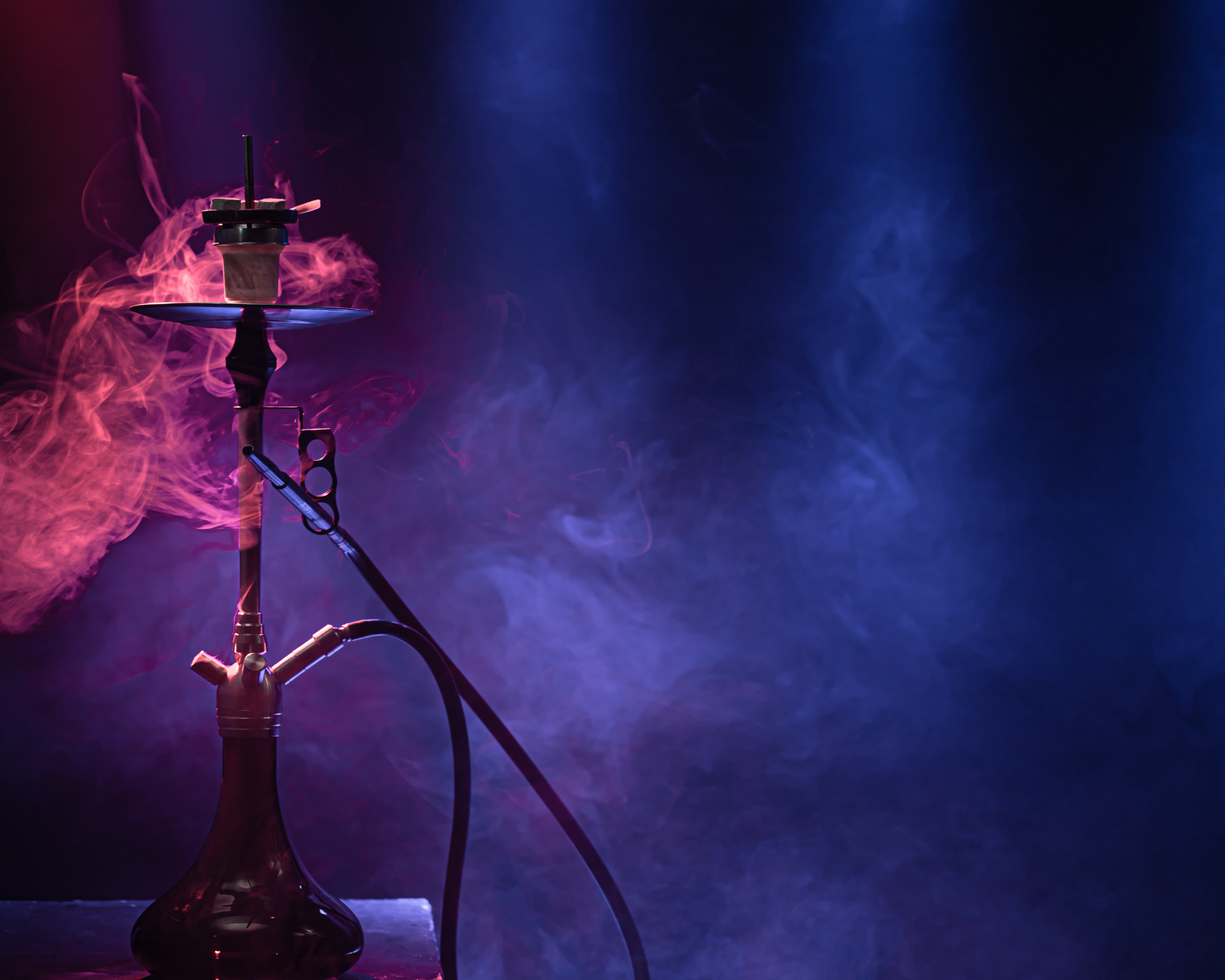Hooked on Hookah
Hookah use is rising among high school and college students, but few of these young people are aware of the health risks associated with it.

Read Time: 4 minutes
Published:
Argileh, narghile, hubble-hubble, goza, hookah. All of these are the names for the ancient Indian and Middle Eastern practice of smoking flavored tobacco, called shisha, from a charcoal-heated water pipe. In hookah lounges or at home, smokers take turns inhaling the tobacco smoke via a hose.
While adolescent cigarette use has declined from 70.1% in 1991 to 17.8% in 2021, hookah has become more popular among high school students and young adults. An estimated 6.1% of 18-24 year-olds use hookah, frequenting the lounges near their college campuses and purchasing their own hookahs. In order to understand young peoples’ motivations to smoke hookah, Tony Jehi and colleagues conducted surveys, focus groups, and one-on-one interviews with 18-24 year-olds.
Seventy percent of participants believed that cigarettes were more addictive than hookah and that they themselves were not addicted. Hookah is often thought to have less nicotine than cigarettes, and therefore, a less addictive alternative. The truth is, in fact, the opposite. However, many hookah brands obscure their dangers to young people, often not complying with federal laws that mandate nicotine warnings on their packaging.
Hookah smokers are exposed to more nicotine than cigarette smokers. Hookah sessions at lounges typically last upwards of an hour, during which users may take 100-200 puffs of tobacco smoke. A cigarette contains about 10 puffs. This means that hookah users often smoke the equivalent of an entire pack of cigarettes in an hour. Even hard-core chain cigarette smokers would have a hard time ingesting so much nicotine in such a short time.
Policymakers and educators are working to prevent young people from smoking cigarettes and vaping, but hookah is often left out of the conversation.
Similarly, most of the young people who responded to the survey believed that cigarettes contain more carcinogens and create more harmful smoke. Although advertised as a safer alternative to cigarettes, hookah is just as, if not more, harmful. The charcoal used in hookah smoking releases large amounts of carbon monoxide, which has been linked to cases of carbon monoxide poisoning. The air quality of hookah lounges is often considered hazardous by standards of the Environmental Protection Agency. Houses where hookah is smoked may have worse air quality than homes where residents smoke cigarettes.
Hookah smoking causes the same cancers, and pulmonary and cardiovascular diseases as cigarettes. Additionally, individuals can transmit infectious diseases, such as mononucleosis and oral herpes, by sharing a water pipe hose.
Study respondents reported that the social nature of hookah is a major draw. Three quarters of study participants reported smoking hookah as a social activity. Most participants believed that hookah is more socially acceptable than smoking cigarettes.
Few students are receiving education on the dangers of hookah. Only 10% of participants reported that their doctors recommended that they quit. This is likely due to doctors not asking about hookah specifically. Further, schools did not provide education on hookah use. They also shared that most hookah lounges and smoke shops did not check their identification cards to confirm their age.
Policymakers and educators are working to prevent young people from smoking cigarettes and vaping, but hookah is often left out of the conversation. This is largely because hookah is viewed as a social and cultural activity, making it seem less problematic. But this benign perception is also a major reason why young people get hooked. The social appeal combined with the lack of hookah-specific education and law enforcement at some lounges and smoke shops make hookah appealing and accessible.
To limit the negative health effects of hookah use, the authors urge schools and physicians to increase knowledge of the harmful effects of hookah. They recommend that schools appoint influential peers to communicate the dangers of hookah to their peers, limiting the social approval of hookah use. Finally, they suggest that departments of health monitor smoke shops and hookah lounges in order to enforce age restrictions.



